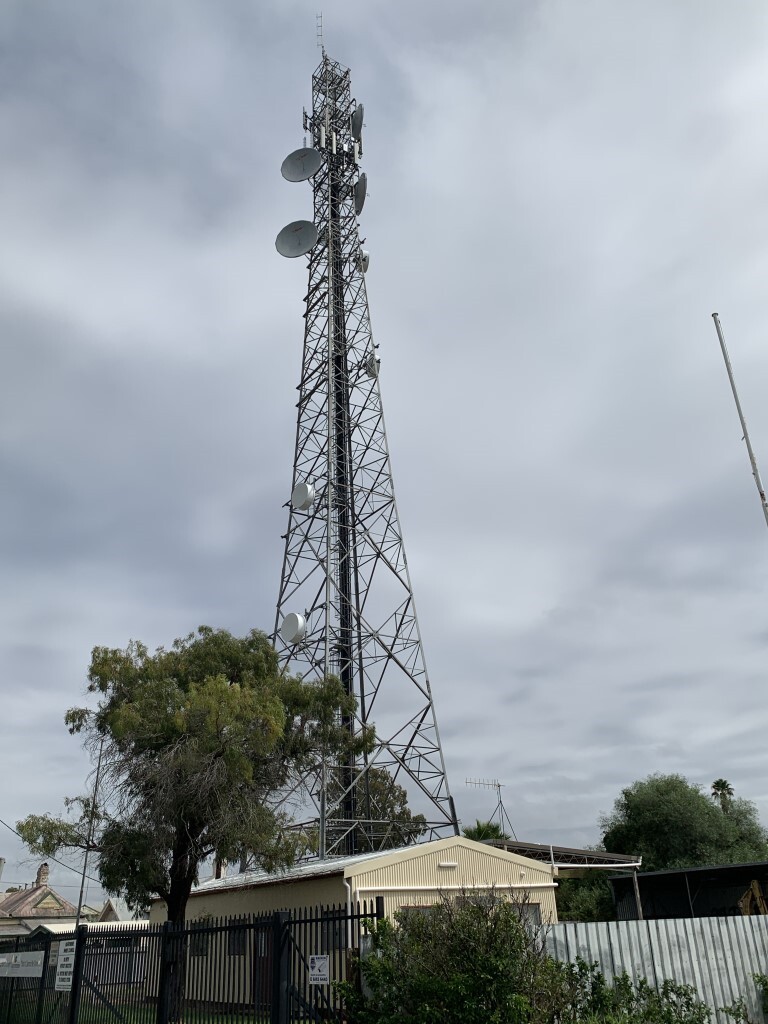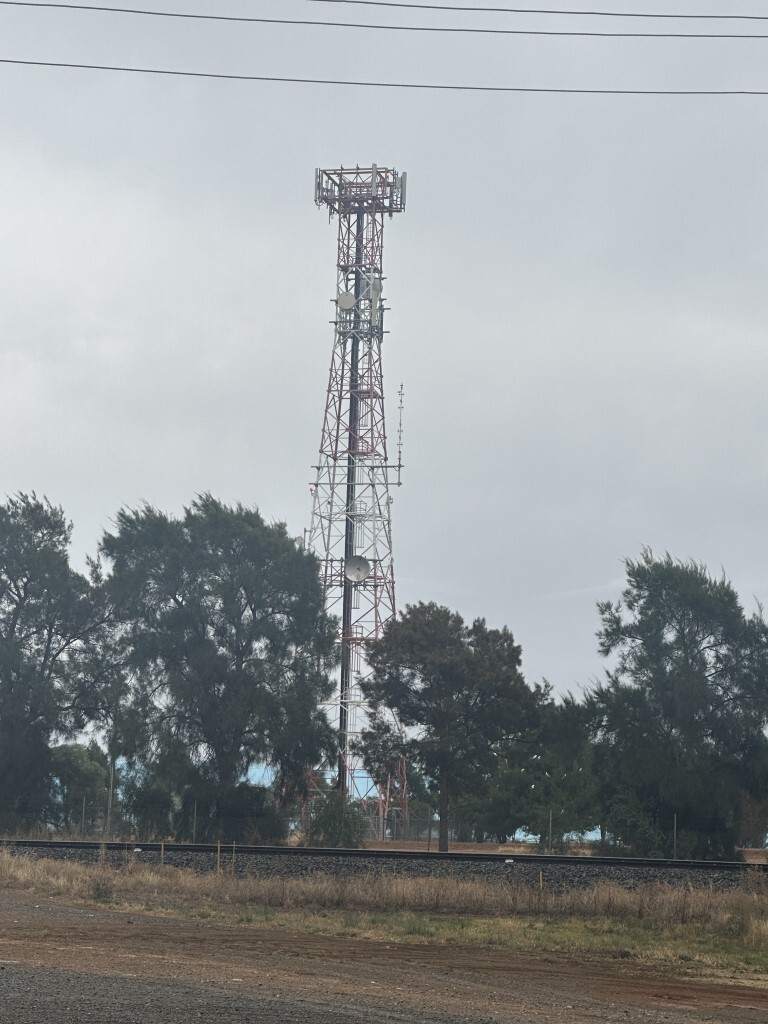Inquiry fatigue? Talking telecommunications ... again
Sharon Bonthuys
15 June 2023, 4:35 AM
 The Cobar Telstra Tower situated behind the post office. Photo: Emma Datson.
The Cobar Telstra Tower situated behind the post office. Photo: Emma Datson. Unreliable mobile phone coverage in regional and remote Australia was the subject of the latest round of public hearings held in May and June as a federal parliamentary committee continues to investigate regional mobile phone infrastructure services in the bush.
However, regional communities may be wondering why an inquiry with a focus on regional and remote services is holding their public hearings in major centres like Adelaide, Alice Springs, Perth, Canberra, Sydney and Geelong.
Since late last year, the House of Representatives’ Standing Committee on Communications and the Arts has been looking at “the experience, opportunities and challenges for co-investment in multi-carrier regional mobile infrastructure.”
Poor mobile reception is experienced outside every regional town and city in the country, impacting families, businesses and communities.
It is a serious issue and this inquiry is slanted towards increasing competition as a way to improve mobile service infrastructure - possibly skirting the wider regional community concerns about connectivity.
With this inquiry the latest in a long list of public investigations into these issues over the last few years, it is unsurprising that only 37 submissions were received from across the country. Of those, just five submissions were made by individuals.
Background to this inquiry
The inquiry was called by the federal Minister for Communications, the Hon Michelle Rowland MP, on September 12, 2022.
They have been asked to report back on “the costs, feasibility and public benefits associated with the deployment of infrastructure which supports a single mobile carrier, and the various models for infrastructure which supports multiple mobile carriers; community views on single carrier versus multi-carrier outcomes; and examples of successful multi-carrier outcomes and their applicability in the Australian context.”
Despite the inquiry's focus on rural and remote services and infrastructure, some stakeholders are questioning the locations of the hearings.
To date, fifteen public hearings have been held since November 2022, including the latest in Sydney and Canberra at the end of May 2023 and in Geelong in early June.
Of those, nine were held in the nation’s capital, Canberra with Launceston and Alice Springs the only regional locations where a public hearing has been held.
The committee has heard evidence from state and territory governments, First Nations communities and media, business chambers, councils, health services, fire and emergency services, community groups and individuals on the impacts of unreliable mobile coverage.

ABOVE: Telecommunications tower in Trangie. Photo: Sharon Bonthuys
What have submitters said?
The Regional, Rural and Remote Communications Coalition (RRRCC) was one of just 32 organisations to make a submission to the inquiry.
Formed in 2016 to “raise awareness of the vital role of connectivity for regional, rural, and remote Australians and to advocate for continued improvements”, the twenty-member coalition supports five high-level goals being achieved in the telecommunications space.
They are calling for guaranteed access to voice and data services and for these services to meet minimum standards and reliability. Expanding mobile coverage, digital capacity building and affordable communications services in rural, regional and remote area are their priorities.
The National Farmers Federation (NFF), which is part of the RRRCC coalition, also made a submission stressing the importance of “accessible, reliable, quality and affordable telecommunications and connectivity services” to agriculture. The organisation’s 2030 roadmap seeking to grow agricultural output in the sector suggests farmgate output will reach $30 billion by 2030.
“Mobile communications infrastructure, and the regulatory and commercial settings surrounding it, need to meet [the] reasonable service expectations and best support ongoing improvements to overcome the challenges being faced [by people in rural, regional and remote Australia],” the NFF submission states.
They also back infrastructure-sharing between service providers, such as the Telstra-TPG arrangement being reviewed by the ACCC.
“We did, however, encourage the ACCC in its review to ensure the agreement provides medium and longer-term benefits to regional consumers. We would encourage the Committee to consider the role, benefits or otherwise of such market-led infrastructure sharing,” the NFF submission states.
The NSW Government also made a submission to the inquiry, with then Deputy Premier the Hon. Paul Toole MP indicating that the state government had recently introduced its NSW Connectivity Strategy aiming to “improve coverage and performance to metropolitan equivalent levels for people in regional communities regardless of which carrier they use.”
He stressed that recent disasters had shown the pressing need for better connectivity and resilience of the telecommunications system to prevent the “digital divide” from widening. The government also supported the concept of infrastructure-sharing.
Regional communication advocate and member of the New England Visions 2030 Institute, Alun Davies, wrote in his submission that “the future of Australia will be decided in regional areas with water efficiency, food production, renewable energy and supply chains. It is therefore absolutely critical regional areas have the best telecommunications and connectivity possible.”
His suggestions including having the National Broadband Network (NBN) involved in providing mobile sites for the federal government’s Mobile Blackspot Program, and more sites powered by renewable energy including solar, wind and batteries.
Andrew Ricketts from a rural community in northern Tasmania also made a submission to the inquiry.
“Like many such areas across rural Tasmania, we are bushfire prone and hilly, thus we have an important need for communication, including at the time of emergencies but with no mobile phone tower and poor, patchy or completely absent mobile reception, we have a serious problem.
“This is a far bigger problem than the one of the sharing of the towers. Sharing of towers should be fixed without rancour. The existing landline phone network is wearing out. People everywhere are not taking up landlines anymore as it is seen as an unreliable, under serviced and redundant technology,” he wrote.

ABOVE: Narromine's telecommunications tower. Photo: Sharon Bonthuys
Parkes: NSW’s largest federal electorate
The federal member for the electorate of Parkes, Mark Coulton MP, is one of the nine-member Standing Committee carrying out this inquiry, which comprises a mix of Labor, coalition and independent elected representatives.
During his time as a minister in the former federal government, Mr Coulton also announced the 2021 Regional Telecommunications Independent Review, so is no stranger to the issues confronting rural, regional and remote Australia while representing the largest federal electorate in NSW.
Parkes electorate measures 393,413 square kilometres and stretches across almost half the state from the Queensland border in the north to the South Australian border in the west.
The main towns in the Parkes electorate include Bourke, Brewarrina, Broken Hill, Cobar, Condobolin, Coonabarabran, Coonamble, Dubbo, Gilgandra, Ivanhoe, Menindee, Moree, Narrabri, Narromine, Nyngan, Tibooburra, Walgett, Warren and Wilcannia. Many of the Western Plains App's readers will hail from one of these areas.
Parkes also includes an area called “Unincorporated NSW” which is a large swathe of land in the tri-border region in the far west and north of NSW.
Mobile phone service is poor in many locations and non-existent in the vast distances between towns. Those living and working in the north, central west and far western areas of NSW can all recall instances when they have not been able to access mobile service.
What the standing committee says so far…
The Western Plains App sought comment from Mr Coulton in relation to the inquiry, particularly to find out what it aimed to achieve, whether it was properly promoted across regional and remote Australia given the low number of submissions, and why the majority of public hearings about regional and remote mobile phone service and infrastructure were held in capital cities.
A spokesperson from the Parkes electorate indicated that Mr Coulton would not comment until the inquiry concludes.
A spokesperson for the Standing Committee on Communications and the Arts told the Western Plains App that “the committee is hoping to report later this year after listening to people and organisations facing difficulties with their access to mobile telecommunications, and also the telcos and tower companies that provide these services.
“The inquiry is hearing from many different groups and representatives with diverse views on the issues beyond those who formally wrote a submission addressing some or all of the terms of reference.”
The committee spokesperson said that holding the hearings in capital cities as well as regional centres such as Alice Springs, Launceston and Geelong allows representatives from regional areas to either attend in person or teleconference.
With connectivity such an issue in so many places, one has to wonder if those planning the inquiry have actually stopped to think about the issues facing those with connectivity problems in “dialing in” to teleconferences in capital cities.
Inquiry fatigue?
Every three years the Regional Telecommunications Independent Review Committee reviews services and its reports help shape the policy agenda. The 2021 review, announced by then Minister for Regional Health, Regional Communications and Local Government, the Hon. Mark Coulton MP, ran from June to December 2021.
That review received over 650 submissions and described the situation at that time as a “patchwork quilt approach to connectivity”.
It found that better coordination was needed between federal, state and territory governments to address the patchwork quilt approach.
It also found that local councils and other stakeholders were being expected to facilitate telecommunications service delivery without being appropriately resourced to understand the needs or deploy solutions.
Supply side issues were also identified as contributing to the connectivity issues “as barriers to competition and innovation in regional telecommunications markets.”
The Australian Competition and Consumer Commission (ACCC) also launched a similar inquiry to the current one in mid-2022 at the behest of the then Minister for Communications, investigating “access to towers and associated infrastructure in regional, rural, remote and peri-urban Australia and the feasibility of temporary mobile roaming during natural disasters and emergencies.”
That inquiry, which fielded 58 submissions, included a survey in September 2022 on the impacts of poor mobile coverage which also sought feedback on whether rural/remote users would support mobile roaming during emergencies and how mobile coverage could be improved. The survey yielded 1,483 responses.
The inquiry also hosted three stakeholder forums in February and March 2023, travelled to the Daly River region in the Northern Territory to consult with First Nations communities and businesses, and participated in an agricultural field day near Horsham, Victoria in March 2023. The ACCC’s preliminary report was released in April 2023 and its final report is due by June 30, 2023.
The ACCC’s inquiry focused on “the changes in industry structure arising from the divestment of tower assets by the mobile network operators (Telstra, Optus and TPG Telecom) to three major mobile network infrastructure providers (Amplitel, Indara and Waveconn),” and consulted widely with infrastructure providers and users.
“Results from our consumer survey show that around 78 per cent of respondents considered that mobile coverage in their area was poor, very poor or none. Around 69 per cent of respondents identified that they lived in a regional, rural, remote or remote Indigenous community,” the preliminary report states.
Safety concerns about poor connectivity in rural and remote communities, and in particular, in First Nations communities were also highlighted, with rural and remote residents considering they have been “left behind.”
The increasing use of mobile technology in agriculture was also highlighted, with the costs of locating and erecting mobile towers on private land one of many challenges identified by the inquiry.
Kristy Sparrow from the Better Internet for Rural, Regional and Remote Australia (BIRRR, also part of the RRRCC) said her organisation made a verbal submission to the ACCC inquiry and attended several of its public consultations but did not make a submission to the current Standing Committee inquiry. As a volunteer organisation, it is simply not resourced to be able to respond to every inquiry, she said.
“Infrastructure is not the major issue in regional communications; the biggest issue is connectivity illiteracy and roaming/shared infrastructure will not fix that problem.
“In a recent survey of our members, coverage and capacity of mobiles are much bigger issues than competition. Competition will not bring extra coverage and in many cases, not increase capacity but will contribute to the load on existing networks,” Ms Sparrow said.
“Previous and current rounds of the [Mobile Black Spot Program] have encouraged/incentivised shared infrastructure and it hasn't been taken up by carriers. These decisions tend to be commercial in nature.”
It is unknown at this stage when the committee will present its final report.
In the interim, readers interested in viewing the terms of reference, submissions and other information can do so on the Standing Committee’s inquiry webpage.




